In a world brimming with biodiversity, there are a few creatures so rare that catching a glimpse of them can feel like winning the natural world’s lottery. Some of these animals are so elusive and unique that they seem almost mythical. If you’re lucky enough to ever witness any of these in person, consider yourself among a fortunate few. Whether due to their limited habitats, elusive nature, or critically endangered status, these animals are seldom seen by humans. Let’s dive into the world of these extraordinary creatures, shall we?
1. The Enigmatic Snow Leopard: Ghost of the Mountains
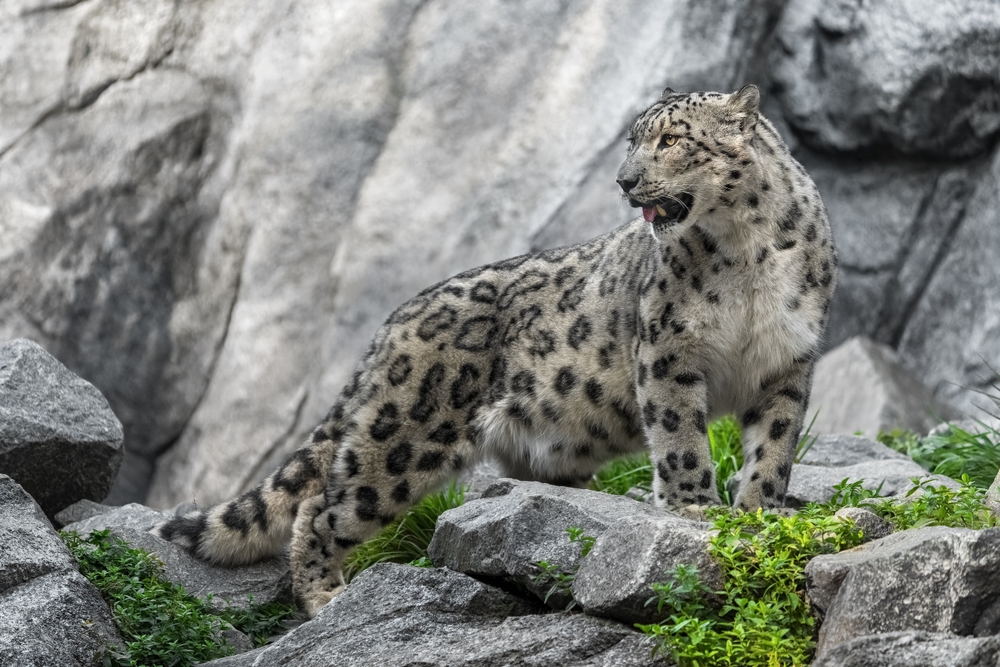
If there’s an animal that embodies the phrase “blink and you’ll miss it,” it’s the snow leopard. Known as the “ghost of the mountains,” this feline prowls the rugged terrains of Central Asia, evading human presence with its excellent camouflage and solitary nature. With its thick fur and long tail, it gracefully navigates the rocky landscapes, rarely leaving any trace of its passing. Snow leopards are incredibly elusive, making it feel like a true privilege to spot one in the wild. Many people dedicate years to studying them and still never catch more than a fleeting glimpse.
These creatures are as mysterious as they are beautiful, with their piercing green or blue eyes and silent, stealthy movements. Conservationists work tirelessly to protect their habitats and ensure these majestic creatures can roam freely without human interference. Despite their scarcity, snow leopards play a crucial role in their ecosystem, maintaining the balance by preying on mountain sheep and goats. Their presence is a testament to the untouched beauty of the world, reminding us of what we stand to lose if we don’t conserve their habitats.
2. The Majestic Saola: Asia’s Unicorn
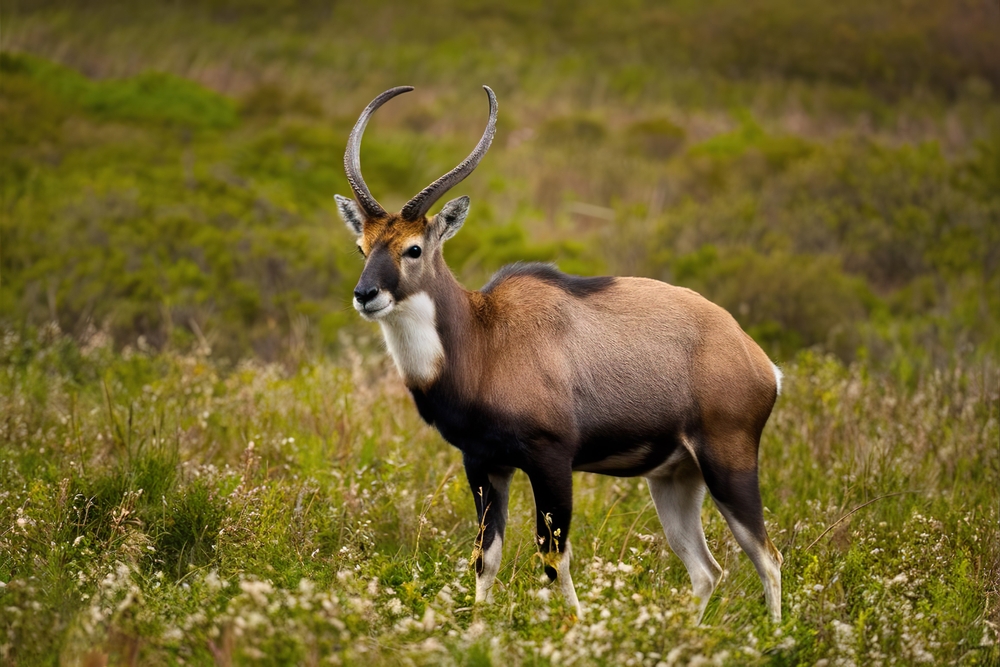
The saola, also known as the “Asian unicorn,” is one of the rarest and most elusive mammals on the planet. Discovered only in 1992 in Vietnam, these antelope-like creatures are so scarce that they’ve been spotted in the wild only a handful of times. Sporting long, straight horns and a gentle demeanor, the saola captivates those fortunate enough to encounter it. According to WWF, its natural habitat lies deep within the forests of the Annamite Range, an area that is as hard to access as the saola is to find.
Despite its name, the saola bears little resemblance to mythical unicorns but is equally enchanting due to its rarity. Their elusive nature has rendered them almost mythical in the eyes of conservationists who strive to understand and protect them better. The saola faces threats from habitat loss and poaching, making conservation efforts critical to their survival. In a world where many animals are well-documented, the saola remains shrouded in mystery, a symbol of the vast unknowns within our natural world.
3. The Elusive Vaquita: The Porpoise on the Brink
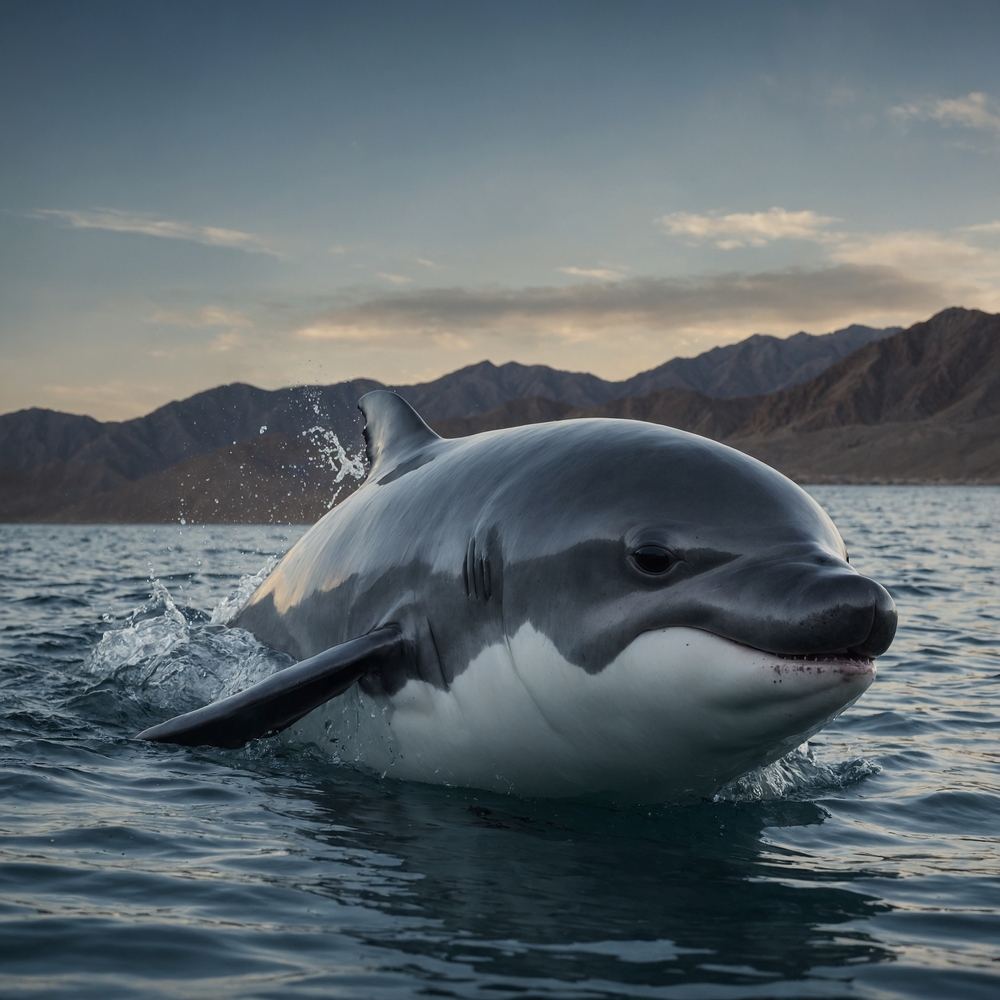
Meet the vaquita, the world’s most endangered marine mammal. With fewer than 30 individuals estimated to remain, seeing a vaquita in the wild would be akin to finding a needle in a haystack. These small porpoises inhabit the northern part of the Gulf of California and are known for their shy nature and elusive behaviors. According to the Animal Welfare Institute, their name, “vaquita,” translates to “little cow” in Spanish, a nod to their small stature and gentle features.
The vaquita’s critical status stems from bycatch in illegal fishing operations, particularly in gillnets meant for another endangered species, the totoaba. Efforts to save the vaquita have been challenging, with conservationists racing against time to implement protective measures. For those passionate about marine life, the vaquita represents both the beauty of diversity and the urgent need for conservation. As the sun sets over the Gulf waters, one can only hope that these efforts will allow the vaquita to swim freely for generations to come.
4. The Striking Aye-Aye: Madagascar’s Nocturnal Wonder
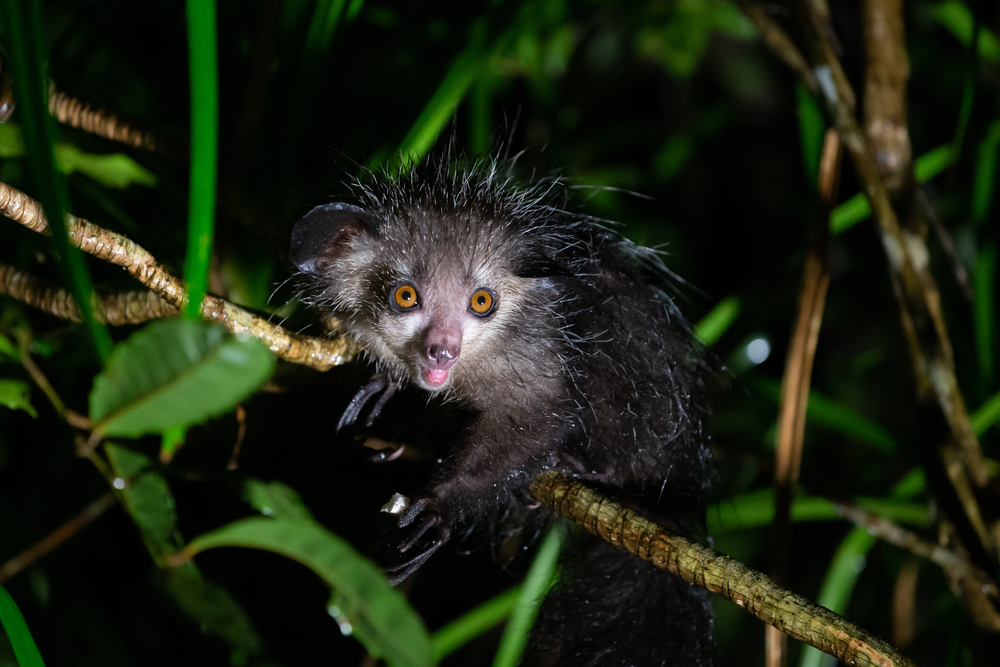
The aye-aye is a creature that seems to have stepped straight out of a fantasy novel. Found exclusively in Madagascar, this nocturnal lemur is distinguished by its large eyes, bushy tail, and elongated middle finger used for foraging insects. Despite its unusual appearance, the aye-aye is a master of adaptation, utilizing its unique features to thrive in the dense forests of its island home. However, its rarity and odd appearance have led to superstitions that sometimes threaten its existence.
Aye-ayes are a testament to the incredible diversity of life in Madagascar, an island known for its unique wildlife. These lemurs are solitary creatures, preferring the cover of night to search for food and avoid predators. Conservationists work diligently to protect their habitats and dispel myths that endanger them. For those lucky enough to witness an aye-aye in the wild, it’s a reminder of the world’s natural wonders that are still largely undiscovered and unexplored.
5. The Stunning Amur Leopard: Nature’s Living Masterpiece
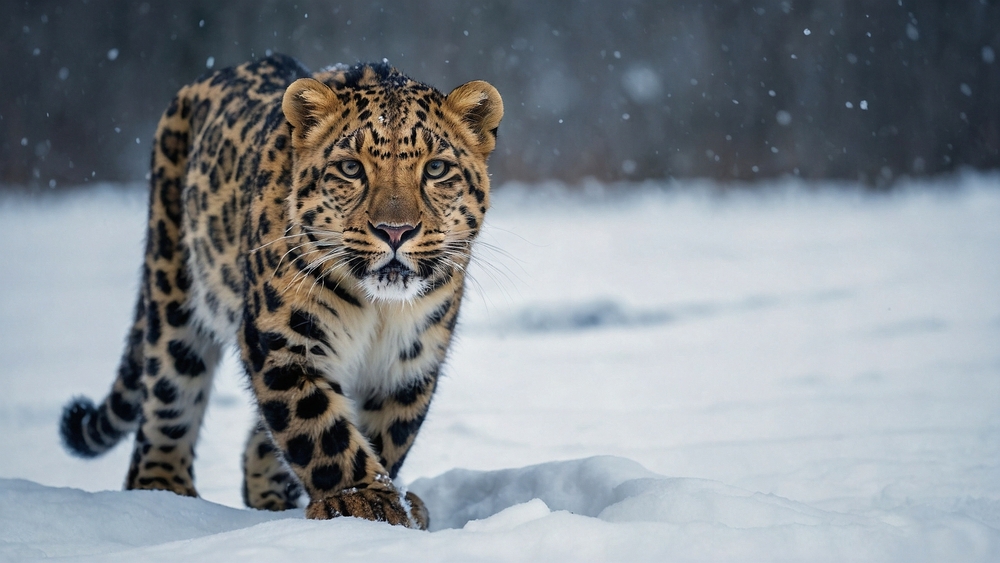
We all know leopards are beautiful, but the Amur leopard takes it to a whole new level. With only about 100 individuals remaining in the wild, this majestic big cat is on the brink of extinction. Found in the temperate forests of the Russian Far East and China, the Amur leopard has a gorgeous coat of thick, soft fur that turns paler in the winter months. Each of its rosettes is unique, much like a human fingerprint, adding to its allure and rarity.
Despite its beauty, the Amur leopard faces numerous threats, including poaching and habitat destruction. Conservation efforts have made strides in recent years, but there’s still a long way to go to secure its future. Spotting an Amur leopard in its natural habitat is a dream for wildlife enthusiasts and photographers alike, yet it’s a sight few will ever experience. In the face of adversity, the Amur leopard stands as a symbol of resilience and the urgent need for conservation action.
6. The Mysterious Kakapo: New Zealand’s Night Parrot
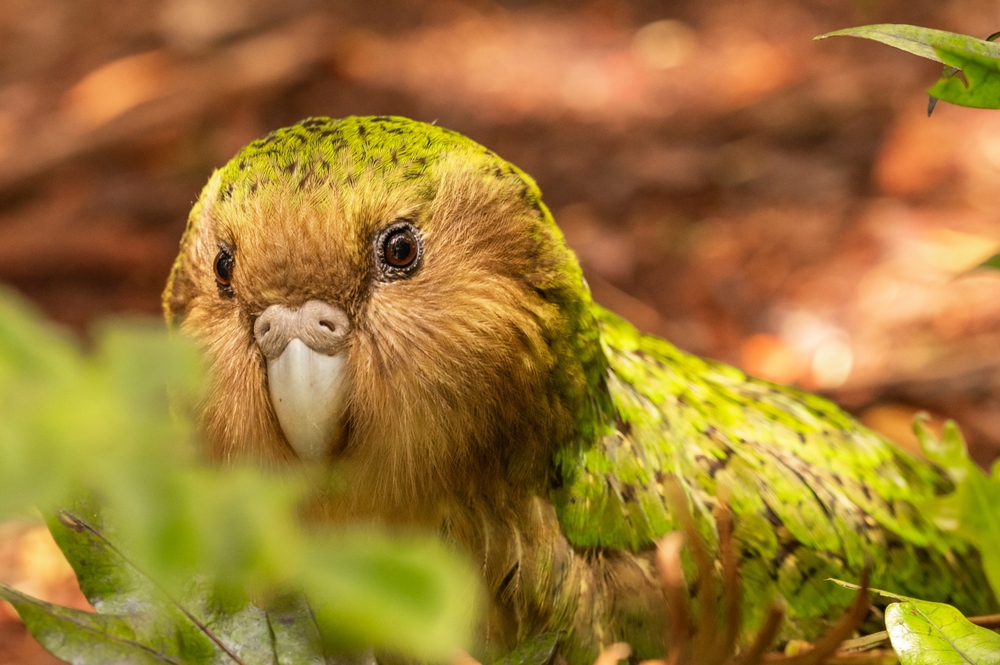
The kakapo is not your average parrot—it’s a flightless, nocturnal wonder found only in New Zealand. Known for its owl-like face and hefty build, this bird is a quirky survivor in the world of avians. Once abundant, the kakapo is now critically endangered, with intensive conservation efforts underway to save it from extinction. Its unique mating calls, echoing through the night, are as fascinating as they are rare.
Kakapos are a testament to New Zealand’s extraordinary biodiversity. These ground-dwelling parrots have a curious nature, and conservationists have developed innovative breeding programs to boost their numbers. The dedication to preserving the kakapo is a beacon of hope and a lesson in how humans can act to save endangered species. If you ever find yourself in the presence of a kakapo, you’ll be witnessing a piece of living history, a tangible connection to the ancient world.
7. The Quirky Okapi: Forest’s Hidden Gem
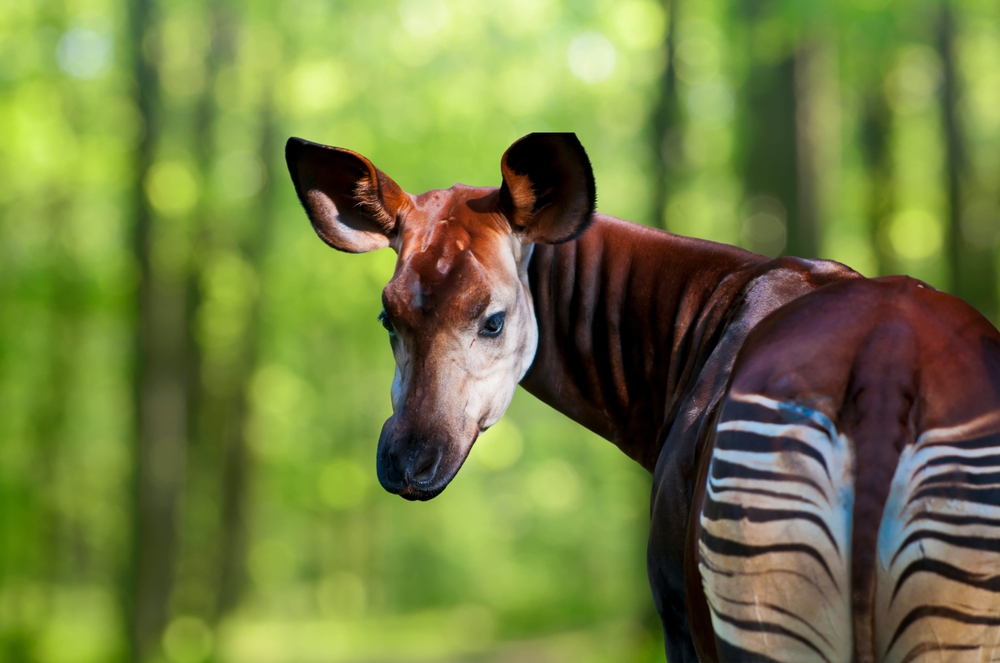
The okapi, often referred to as the “forest giraffe,” is one of nature’s best-kept secrets. Native to the dense rainforests of the Democratic Republic of Congo, this elusive mammal is a close relative of the giraffe, despite its zebra-like stripes. The okapi’s unique appearance and shy nature make it a rare sight in the wild, capturing the fascination of those lucky enough to see one. As solitary creatures, okapis prefer the cover of the forest, moving silently through the undergrowth.
Despite their rarity, okapis play a crucial role in their ecosystem, aiding in seed dispersal and maintaining the health of their forest habitat. Conservation efforts focus on protecting their environment and combating threats such as poaching and habitat destruction. The okapi is a symbol of the rich biodiversity that exists within Africa’s rainforests, reminding us of the wonders hidden in the world’s most remote corners. For those who cherish wildlife, encountering an okapi is a rare and precious experience.
8. The Rare Javan Rhino: Ancient Survivor
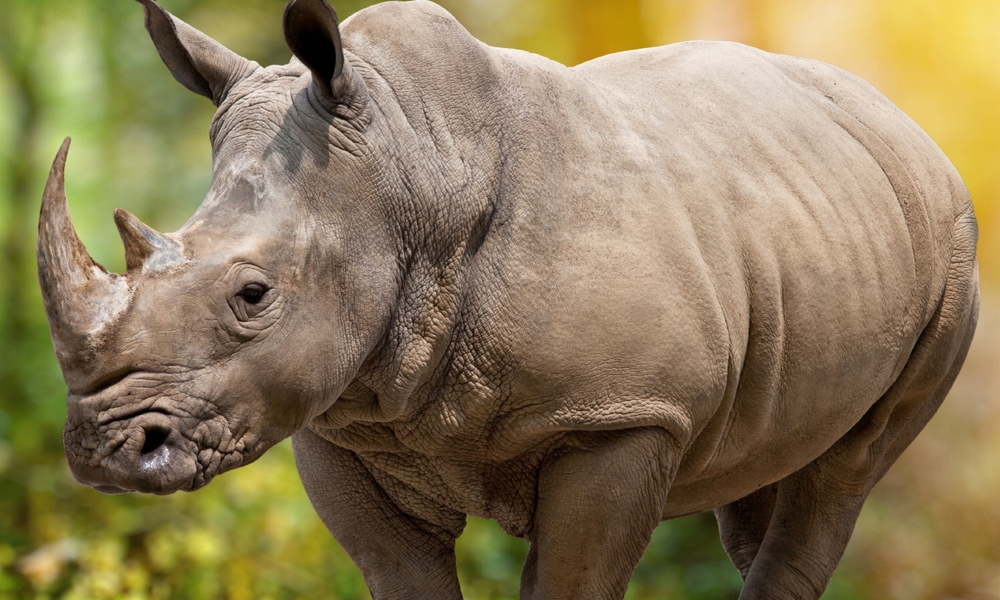
The Javan rhino is a relic of a bygone era, one of the rarest and most endangered large mammals on earth. Found only in the Ujung Kulon National Park in Indonesia, these rhinos are critically endangered, with fewer than 75 individuals remaining. Their elusive nature and dense forest habitat make them incredibly difficult to study, and even harder to spot in the wild. Despite their rarity, Javan rhinos are key players in their ecosystem, contributing to the health and diversity of their forest environment.
Conservationists are working tirelessly to protect these ancient survivors from threats like habitat loss and poaching. The Javan rhino is a testament to the resilience of nature, but also a stark reminder of what we stand to lose if we don’t take action. For those passionate about wildlife conservation, the Javan rhino represents both hope and urgency in the fight to preserve our planet’s biodiversity. Witnessing a Javan rhino in its natural habitat is a rare privilege, an encounter with a piece of living history.
9. The Spectacular Philippine Eagle: King of the Skies
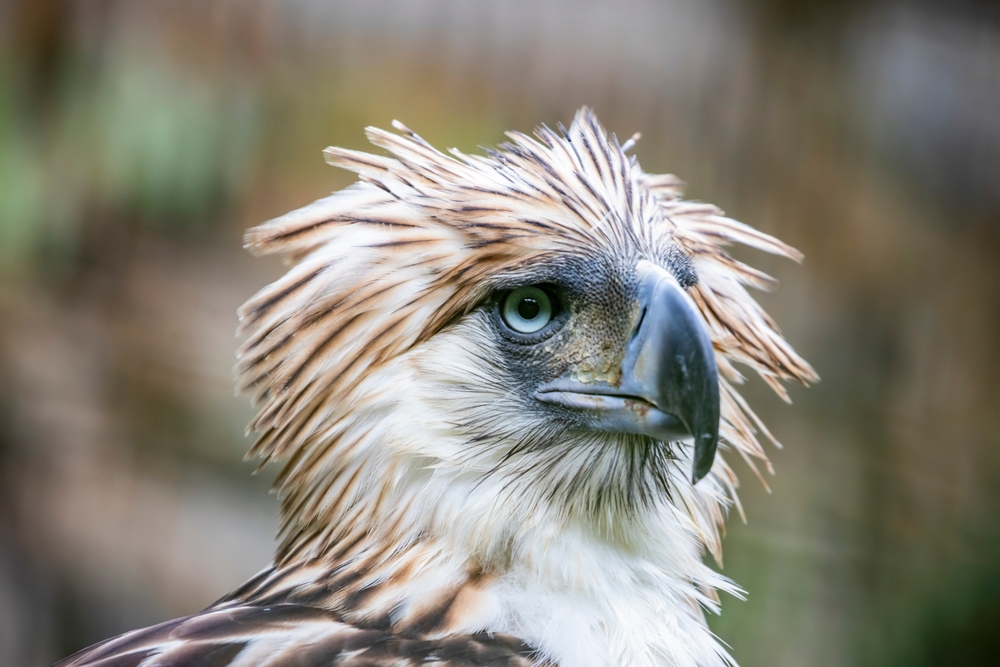
The Philippine eagle is a true icon of avian majesty, known for its impressive size and striking appearance. As one of the largest eagles in the world, it commands the skies over the Philippine rainforest with grace and power. Unfortunately, the Philippine eagle is critically endangered, with habitat destruction and hunting posing significant threats to its survival. Conservation efforts are underway to protect this magnificent bird, but it remains one of the rarest raptors on the planet.
For bird enthusiasts and conservationists, spotting a Philippine eagle in its natural habitat is akin to witnessing a divine spectacle. Its piercing eyes and massive wingspan make it a sight to behold, a reminder of the beauty and grandeur that still exists in the natural world. The eagle’s presence is a symbol of the rich biodiversity of the Philippines and the urgent need for conservation action. To see a Philippine eagle in flight is to experience the wild in its most majestic form, a moment that stays with you forever.
10. The Unique Pangolin: Nature’s Armored Curiosity
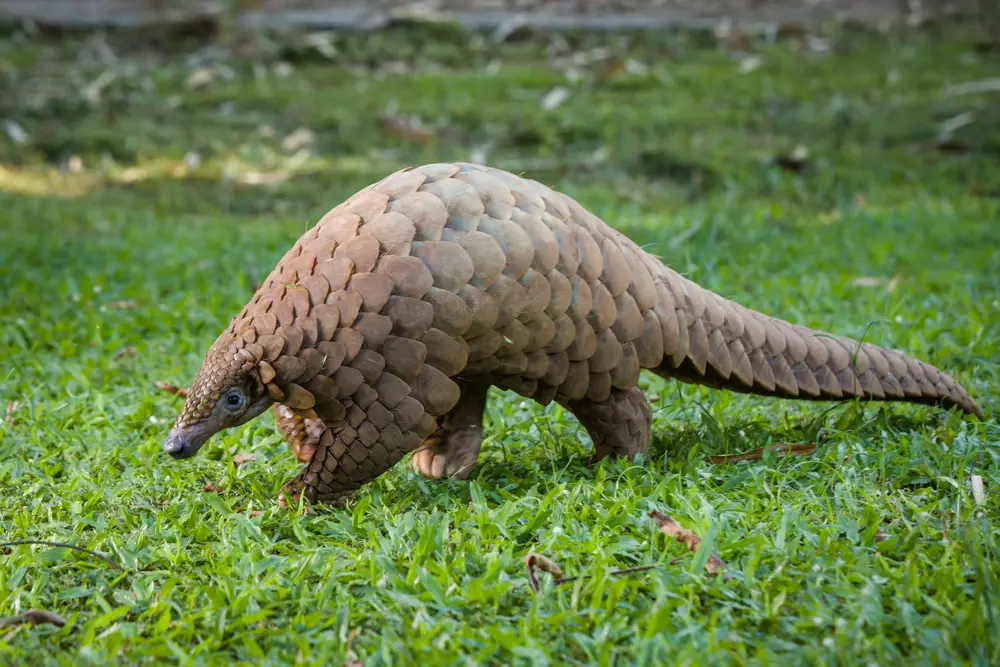
Pangolins are one of nature’s most peculiar creations, with their distinctive armored scales and shy demeanor. Often likened to living pinecones, these unique mammals are found in Asia and Africa, though they’re seldom seen due to their secretive nature. The pangolin is currently the most trafficked mammal in the world, leading to critical endangerment and a desperate need for conservation efforts. Those fortunate enough to encounter a pangolin in the wild find themselves fascinated by its unusual appearance and gentle nature.
These creatures are vital to their ecosystems, controlling insect populations with their specialized diet. Despite their significance, pangolins face severe threats from illegal wildlife trade and habitat loss. Efforts to protect them focus on curbing poaching and raising awareness about their plight. For wildlife enthusiasts, spotting a pangolin is a rare and precious experience, a chance to marvel at one of nature’s most extraordinary designs.
11. The Breathtaking Iberian Lynx: Europe’s Feline Rarity
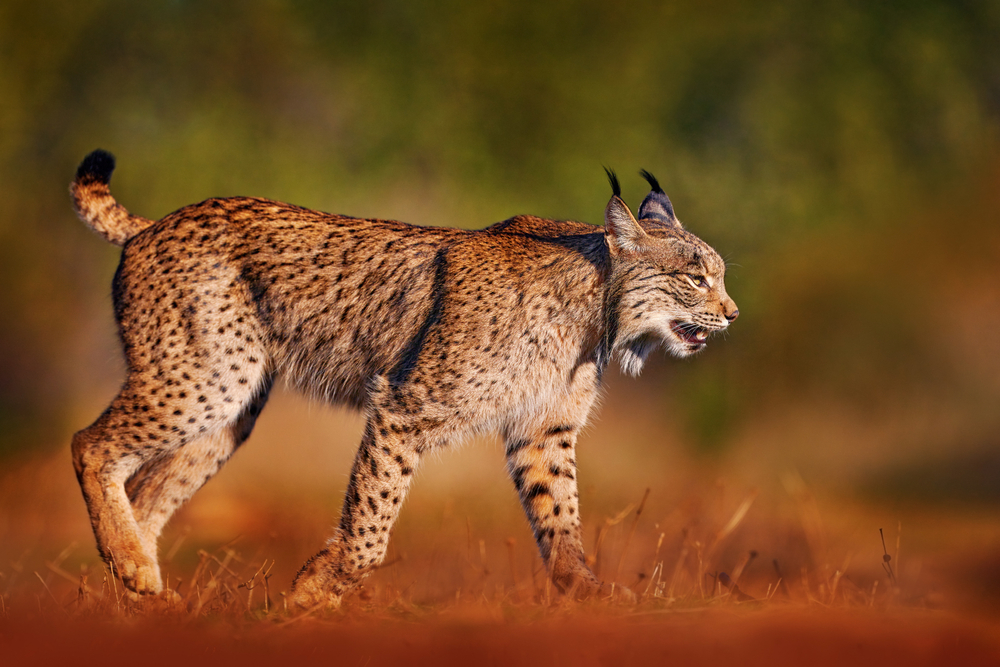
The Iberian lynx is a stunning feline found in the Iberian Peninsula, known for its striking appearance and elusive nature. With its tufted ears and piercing eyes, this lynx is a symbol of the wild beauty of southern Europe. Once on the brink of extinction, the Iberian lynx has made a remarkable comeback thanks to dedicated conservation efforts. Yet, it remains one of the rarest cats in the world, with only a few hundred individuals in the wild.
For those lucky enough to see an Iberian lynx, it’s a reminder of the resilience of nature and the success of targeted conservation initiatives. These cats play a critical role in their ecosystem, controlling the populations of their prey and maintaining a healthy balance. The Iberian lynx is a testament to the power of conservation and the possibility of restoring endangered species to their natural habitats. Encountering one in the wild is an unforgettable experience, a glimpse into the untamed heart of Europe.
12. The Fascinating Chinese Giant Salamander: Living Relic
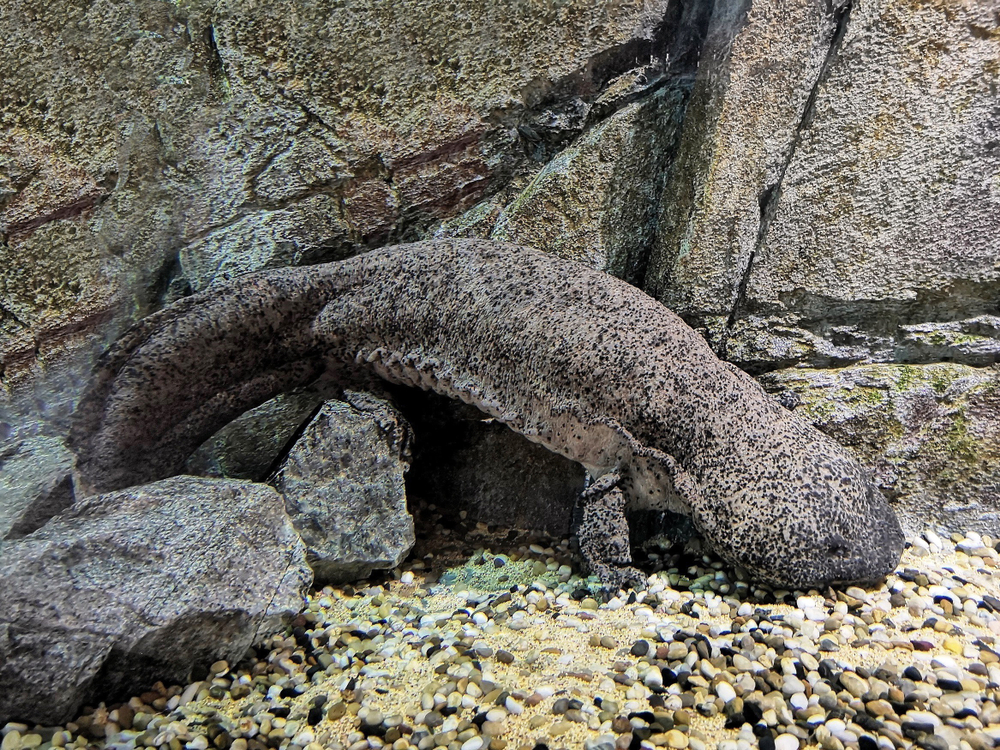
The Chinese giant salamander is a creature that seems to have emerged from a time long forgotten. As the largest amphibian in the world, it can grow up to six feet long, yet it’s rarely seen due to its secretive habits and dwindling numbers. Found in the cool, fast-flowing rivers of China, this salamander is critically endangered, facing threats from habitat destruction and overexploitation. Despite its rarity, the Chinese giant salamander holds significant ecological importance, acting as an indicator species for river health.
Those fortunate enough to see a Chinese giant salamander in the wild are witnessing a living relic, a connection to the ancient world of amphibians. Conservation efforts focus on protecting their habitats and curbing illegal trade, with hopes of preserving this unique species for future generations. For wildlife enthusiasts, encountering a Chinese giant salamander is a rare and precious experience, a chance to connect with one of nature’s most extraordinary creations. Witnessing such a creature is a reminder of the diversity and wonder that still exists in our world.
13. The Enigmatic Narwhal: Unicorn of the Sea
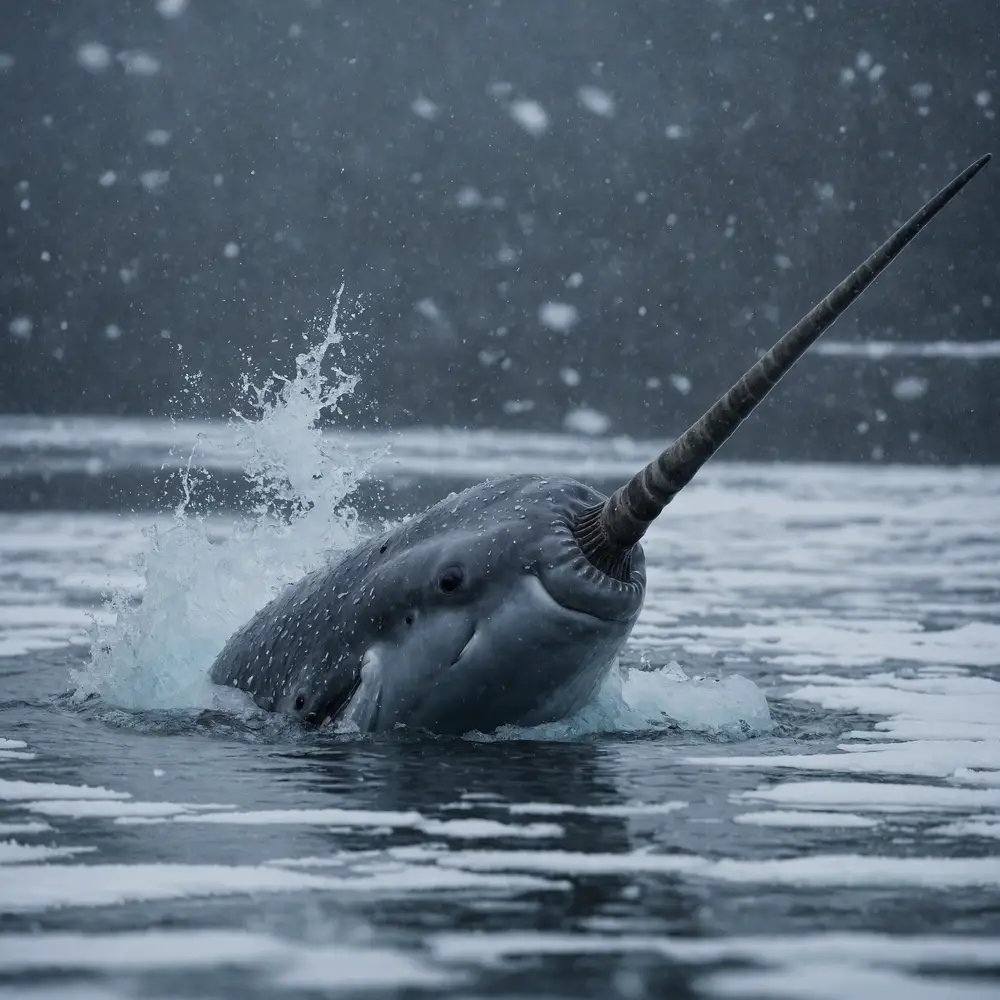
The narwhal, often called the “unicorn of the sea,” is a mysterious marine mammal found in the Arctic waters. Known for its long, spiral tusk, the narwhal has captivated the imagination of sailors and storytellers for centuries. These elusive creatures are seldom seen, as they inhabit some of the most remote and inhospitable environments on earth. Despite their rarity, narwhals are an important component of the Arctic ecosystem, contributing to the health and balance of their marine habitat.
Narwhals face threats from climate change and human activities, making conservation efforts essential for their survival. For those passionate about marine life, spotting a narwhal is a rare and extraordinary experience, a chance to witness one of nature’s most unique and enigmatic creatures. The narwhal’s presence is a testament to the beauty and mystery of the ocean, a reminder of the wonders hidden beneath the waves. To encounter a narwhal is to glimpse the magic of the natural world, a moment that stays with you forever.
14. The Rare Sumatran Rhino: Southeast Asia’s Hidden Treasure
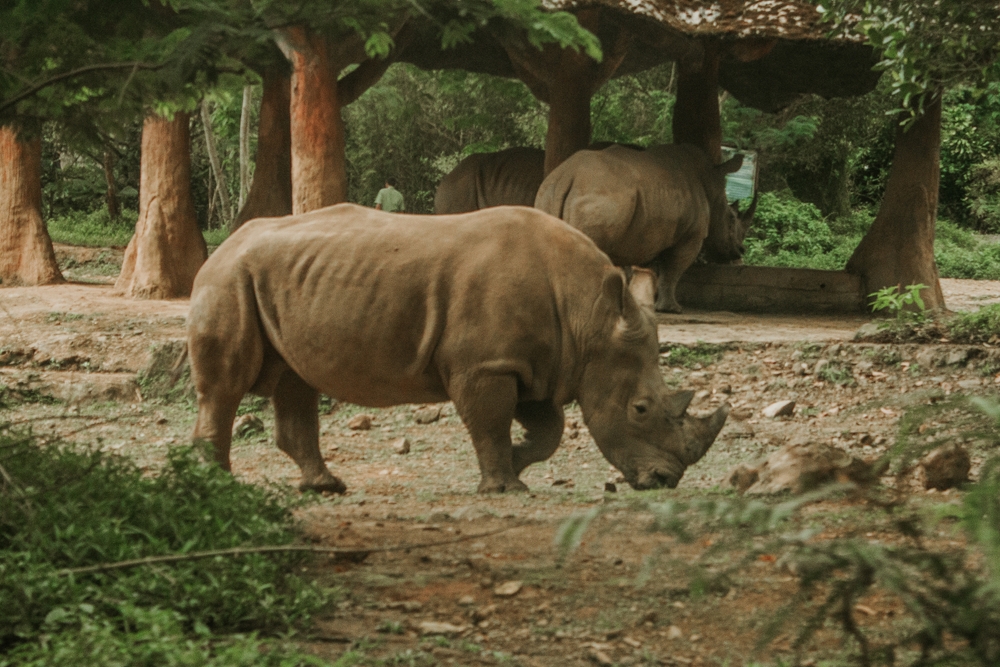
The Sumatran rhino is a critically endangered marvel, often described as one of Southeast Asia’s hidden treasures. With fewer than 80 individuals remaining, these rhinos are rarely seen, inhabiting the dense rainforests of Indonesia. Their elusive nature and rugged habitat make them difficult to study and even harder to spot in the wild. Despite their scarcity, Sumatran rhinos play a crucial ecological role, in maintaining the health and diversity of their forest environment.
Conservationists are racing against time to protect these remarkable creatures from threats such as poaching and habitat loss. The Sumatran rhino is a symbol of the urgent need for conservation action, highlighting the importance of preserving our planet’s biodiversity. For wildlife enthusiasts, encountering a Sumatran rhino is a rare privilege, a moment of awe and wonder in the depths of the forest. To see a Sumatran rhino is to connect with a piece of living history, a reminder of the beauty and fragility of the natural world.
